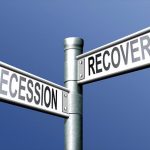Commentary on the Market: 1st Quarter 2017
Ruben’s Commentary on the Market
First Quarter 2017
It is easy to say that the First Quarter of 2017 has certainly been interesting. In the First Quarter of 2016 the domestic stock markets were down 6% right from the start. In contrast, the First Quarter of 2017 stock markets were up sharply following the euphoria created by the presidential elections. However, the euphoria calmed as the quarter progressed. This, in part, was due to the failure of the new administration and the Republican majority of both houses to successfully put forth a new health care package which would be acceptable to all Republicans, as well as Democratic minority. The new administration is finding that some things in Washington change very slowly.
President Trump has moderated a bit on some of his hardline promises to change the way that the United States government does business. This, in many respects, resembles the early days of the Clinton administration where bold moves to push healthcare reform failed miserably. Clinton found himself moving from the left to a more centrist position. Looking back several decades, the Clinton era was one of the most productive economic administrations in the past 50 years. It appears that Trump is toning down his rhetoric. It would certainly be beneficial to our economy if we were to experience something similar. It is still early to tell. I cannot move further without briefly mentioning the allegations of Russian election tampering and what will be discovered. This has caused some uneasiness in the markets, but nothing particularly dramatic.
Despite the political impact, the markets performed well. The first quarter of 2017 saw the Dow Jones Industrial Average rise by 4.5%, the S&P 500 rise by 5.5% and the NASDAQ rise by 9.8%. The top performing sectors of the economy during the first quarter were Technology, in response to greater economic growth; Financials, in reaction to the Federal Reserve Bank’s comments regarding raising interest rates; and Consumer Discretionary, which are the products that we spend on when we have some extra money to work with. The unemployment rate recently dropped to 4.5% in March. As I have stated in numerous prior newsletters, the increase in employment means more workers receiving paychecks. This is followed by greater consumer spending, which further pushes industry to create more goods and services to meet consumer demand. Wage growth was up in March by 2.7% over March of 2016. This is a good sign that employers are showing a willingness to increase pay to attract the best employees in a competitive job market. Core economic growth, or Gross Domestic Product (GDP), is stable and moving upward at roughly a 2% annualized rate. Although interest rates remain at historic lows, the Federal Reserve Bank recognizes that the economy is growing and is looking to manage the growth by raising interest rates going forward in order to keep the economy growing at reasonable and controlled pace. This is a good sign that our economy has returned from the period known as the Great Recession.
Despite the new administration’s rough start, confidence and sentiment are still riding high, as we Americans have lofty expectations for what the president may accomplish in his first year in office. We remain focused on what will come out of Washington, whether it be pro-business legislation, tax reform, or some bipartisan agreement on healthcare. Any of these alone could have a very positive impact on the economy and subsequently the stock market. We will also keep a close eye on international events. There seems to be no lack of distractions. However, out of necessity new strategic partnerships will in all likelihood develop in order to maintain global stability. One example is the warming relationship between China and the United States. The two nations have begun a dialogue focused on seeking a solution to curb North Korea’s nuclear ambitions. A united front would go a long way in helping to foster global stability.




